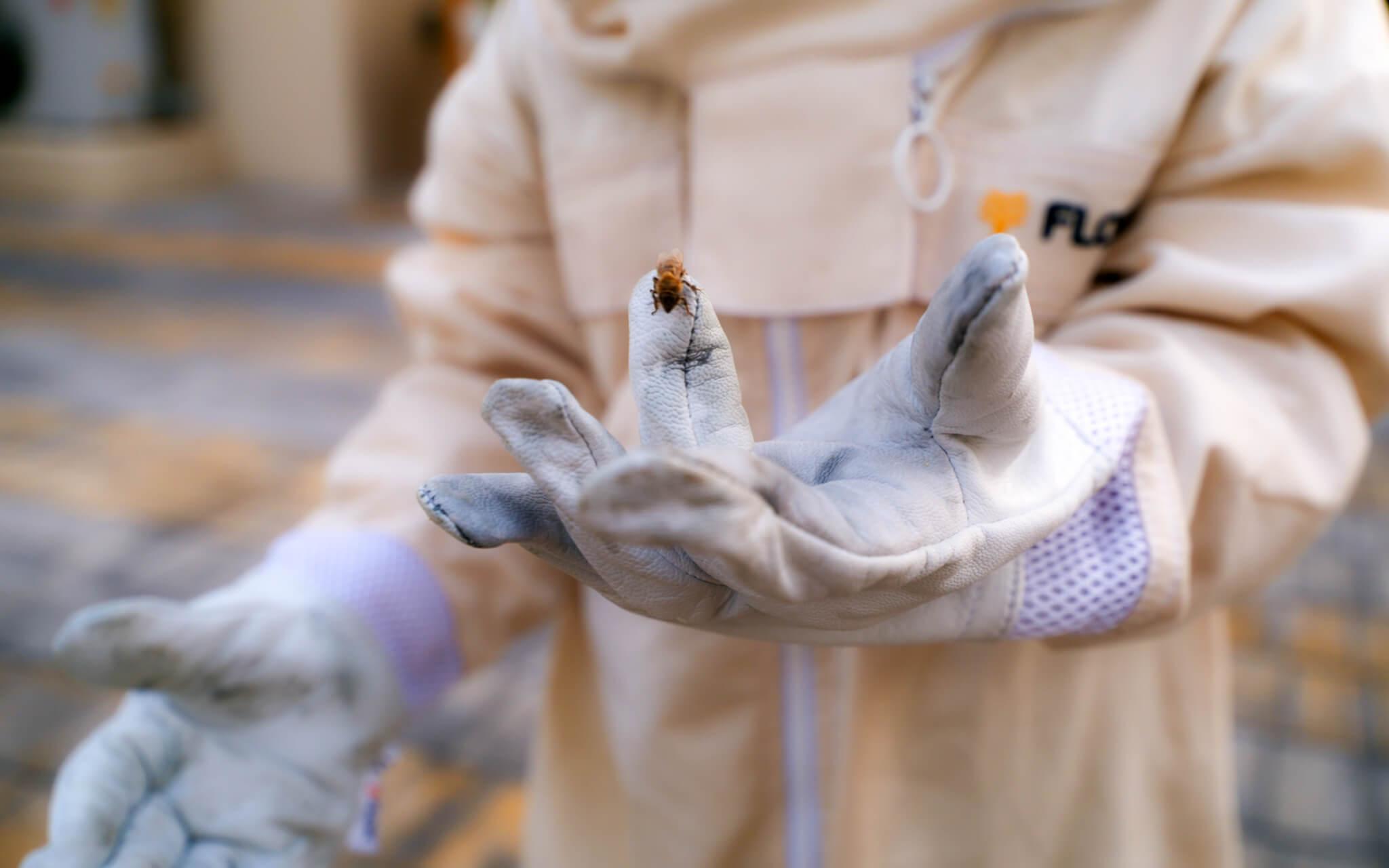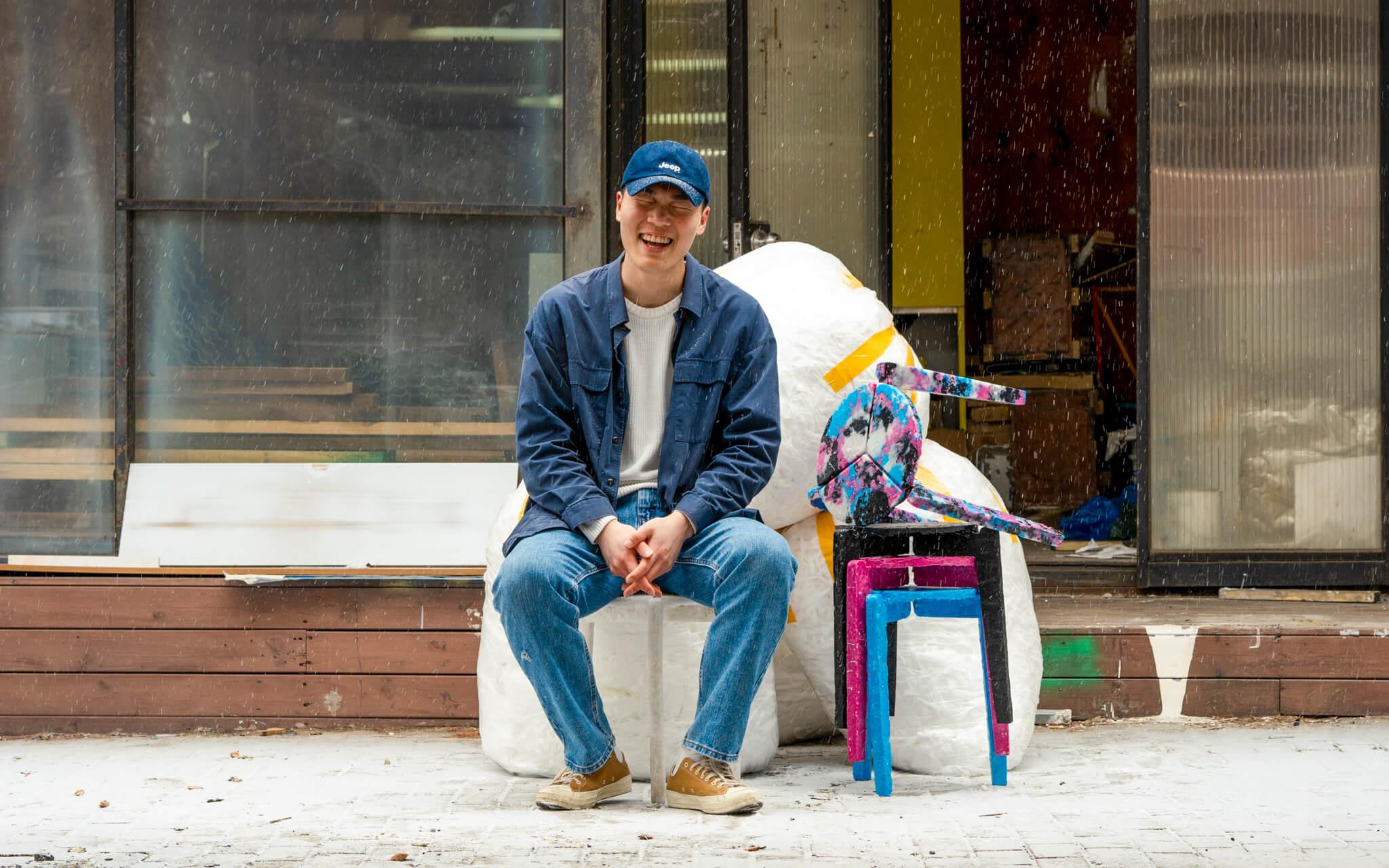The Plastic Gardener of the Himalayas
Kyu-hyun Kim is a South Korean artist who followed his heart and moved his entire life to the Himalayas. Now, he teaches Fine Arts and encourages environmental stewardship to more than 300 Nepalese students in the city of Pokhara.
In front of an animal-print curtain that looks like an intentional backdrop for the virtual interview, Kyu-hyun Kim smiles bashfully when I ask him why he moved to Nepal.
“I’ve always loved the Himalayas,” says Kyu-hyun, as if it were the most natural thing that didn’t need a reason. “I had been there a few times as a young man. In 2015, after the earthquake in Nepal, when I volunteered with the Korean government aid, I decided I’d spend the last chapter of my life in the Himalayas,” he says plainly.
He decided to stay in the Himalayas, though, not because he was trying to fulfil his childhood dream or to check an item off his bucket list. He says he made this wildly unpopular decision for a South Korean man simply because he was devastated by the state of the Himalayas, particularly on the Nepal side, which he witnessed while volunteering after the earthquake. The place that made him incredibly happy was also experiencing great suffering.


“I was never one to get actively involved in the movements,” says Kyu-hyun. He thought of himself only as a painter, and influencing others’ minds through advocacy was a foreign concept. “The earthquake was awful, of course, but the Himalayas were being destroyed by manmade pollution as well, such as plastic waste left behind by millions of hikers from all over the world – the very hikers who come here supposedly because they admire and love this place. I wanted to spread awareness of what was going on,” he says, getting louder and speaking more quickly in his excitement.
He’s committed to a profound sense of urgency as he shares what’s happening at the Roof of the World.
“People tend to centre their concerns on the polar bears or melting glaciers in the Arctic, and I understand those are very serious issues,” Kyu-hyun laments. “However, many don’t realise that the effects of global warming in the Himalayas are three times more accelerated than in any other place,” he emphasises.
“Every year, I see the snow line on top of the mountains thinning.”
The rapidly melting glaciers of the Himalayas, frequent rain, and infrequent snow affect many adjoining regions and communities of the Himalayas with water shortages, avalanches, and floods. Kyu-hyun shares that he doesn’t see enough support for the displaced and those affected by these crises. “I wanted to amplify the climate crises in the Himalayas through many platforms,” he explains. A popular Korean broadcasting station has made a documentary on him called “Namaste, Kim Sir.” He’s been on multiple interviews. He says he agrees to participate in the media only to plead with the public to pay attention to what is happening in the Himalayas.
“The Nepalese government’s sanitation policies are a work in progress,” Kyu-hyun says, hoping to spread awareness throughout global communities and influence more policies regarding plastic waste processing.
“So I go around and pick up plastic waste with my students,” Kyu-hyun shrugs. Teaching arts where the arts aren’t as valued as other subjects, Kyu-hyun has become the Honorary Principal at one of his schools. Now, he uses his platform to convince other faculty members and school boards to lead sanitation activities around the Annapurna base camp.
“For the little ones, I reward them with treats when they bring me these plastic bottles they’ve collected,” he laughs. He says due to the lack of recycling collection, everything gets burnt, including plastic. So, he collects plastic waste like bottles and wrappers, washes them, dries them, and towers them in the school gardens for the world to see.
The Himalayas were being destroyed by manmade pollution as well, such as plastic waste left behind by millions of hikers from all over the world – the very hikers who come to this place supposedly because they admire and love this place. I wanted to spread awareness of what was going on.
Today, Everest is also known as the ‘World’s Highest Garbage Dump’ as climbers have left behind an estimated 50 tonnes of waste. Sadly, these trash piles have begun to affect the local watershed, posing serious health risks for local residents and wildlife.
“The Himalayas are a sacred presence,” Kyu-hyun says. “This place is not just a photo-op. She breathes and lives in front of our eyes.” Every year, he watches people from all backgrounds have similar spiritual experiences in the Himalayan mountains. “Many haven’t experienced the Himalayas, but rarely do you find someone who’s never returned after experiencing the place.” His smile shows how he knows this feeling all too well.
Currently, Kyu-hyun Kim is preparing for an art exhibition hosted by Korea Zen Association in Northern California. The exhibition will showcase artwork by Annapurna Drawing Team, consisting of eight students and three teachers from the Pokhara district.
It will be called The Wind from the Himalayas.
Many of us idealise and overanalyse climate actions. We don’t know where to begin—sometimes, it seems too much to take on, something only a superhero like Captain Planet could do.
But sometimes, it comes in the form of what Kyu-hyun does. Sometimes, you simply clean up the place you love—one plastic wrapper or a bottle at a time—showing your love and care for the environment to others, inspiring with simple authenticity.
Most Popular
The Climate Tribe delivers stories about Biodiversity and Conservation, Circular Economy, Food and Water , and how they intersect with climate.
Subscribe
Get the latest stories inspiring climate action around the globe straight to your inbox.






